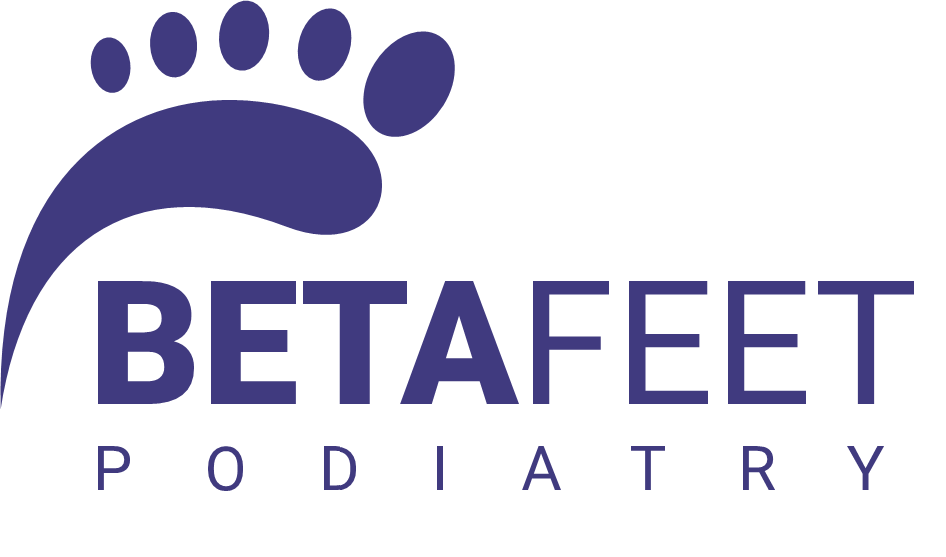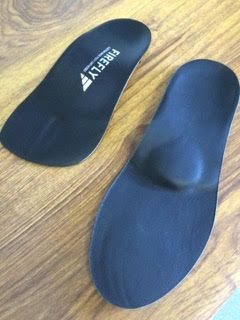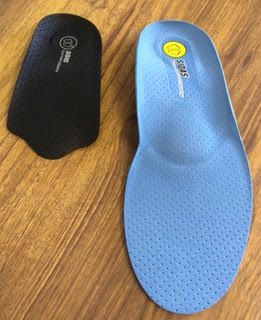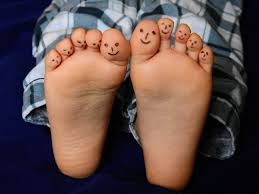19 Oct, 2016 (with apologies for the late posting)
By Matthew Collison
What we offer
Simple, chair side devices
Your podiatrist may provide you with simple insoles in clinic to provide you with a temporary device to relieve your symptoms. Sometimes these may be used to test a concept for treatment with more permanent devices to be issued at a later date, or to act as an interim solution while you wait for your custom device. Simple devices can also be used to reduce pressure under the foot to prevent damage to sensitive feet.
The simple insole may have wedging or felt padding added to it to meet your needs, occasionally these same modifications can me made to the insole of your existing footwear. Sometimes felt padding is applied directly to your foot to reduce pain following the treatment of a painful corn.
These simple devices are available at a relatively low cost, but are not very durable and are mainly used as a temporary solution. Usually, we aim to replace the devices with more durable devices, or in the case of acute problems or self-limiting conditions withdraw them completely.
These devices are available for £20-30 in addition to the consultation fee.
- Simple frelen insoles
- Diaped trisorb insoles
- Prefabricated devices
Prefabricated (sometimes called over-the-counter) devices are useful for a wide range of conditions. We offer accommodative devices made from cushioned materials to reduce pressure in sensitive feet such as for patients with diabetic neuropathy or established deformity relating to arthritis, as well as more rigid functional devices used to manage pathological forces where more biomechanical control is required such as in posterior tibial tendon dysfunction. These devices are often modified in clinic to suit your needs by adding posting or by trimming them to your footwear so that they can best suit your needs.
These devices are much more durable than the simple devices, and are designed to fit a range of feet. Many people do well with these devices, but they do not suit everybody, some people respond better to a custom device, particularly if they have very flat feet or have joint deformity. The devices are cheaper than bespoke or custom devices, but tend to be slightly bulkier and may not be as durable, we have ¾ and full length orthoses as well as narrow orthoses to fit dress shoes.
These devices are available for £75 in addition to the consultation fee.
- Langer Bio Soft (accommodative) and Bio Advanced ¾ (functional)
- Langer Bio fashion (for dress shoes), Bio Mex (functional) and Bio Advanced ¾ (functional)
Bespoke modular insoles
Bespoke modular orthoses (sometimes called simple insoles) are built up from a flat base with components such as arch pads, wedging and metatarsal pads or heel lifts to manage pressure in the foot to reduce pain or offload lesions such as corns and callus. These are particularly useful for plantar fasciitis (plantar heel pain) or to reduce the build up of painful corns on the soles of the feet.
An impression of your foot is made onto a pressure-sensitive ink pad to give an image of your foot which shows high-pressure areas. This is added to the base material and used as a template to which the components such as pads and wedging are added to the podiatrist’s prescription. This is usually covered in a durable leather or vinyl top cover and ground to fit the patient’s footwear. These are made in our own laboratory, giving us full control over the manufacturing process.
These devices are durable, and cost £125 in addition to the consultation fee.
Bespoke modular orthoses: f ully custom devices
Custom foot orthoses are individually made from moulds of the patient’s feet and offer superior fit and comfort to patients. While many conditions can be treated using prefabricated devices, custom devices are particularly useful to patients with chronic conditions or difficult to fit feet. Custom devices are also frequently used by athletes or people with specific footwear needs. Generally, the orthoses are very durable and can be modified over time to ensure they continue to meet the patient’s requirement.
At Betafeet we offer two main types of custom foot orthoses; Sidas orthoses made in house and orthoses made in an external laboratory.
Sidas foot orthoses
The Sidas system uses a pair of vacuum controlled silicone bags to take direct impressions of the feet in specific, semi-weight bearing positions. The podiatrist will place your feet in a specific position on the hardened bags, and will then release the vacuum so that your feet sink into the moulds. Your foot position will be checked and the podiatrist will turn the vacuum on to harden the mould. You then remove your feet and the podiatrist will check the mould. Next, a heated blank insole is then placed into the mould and the podiatrist will ask you to stand on the insole as it cools to ensure it takes the correct shape.
Once cooled, the basic shape of the orthoses is ready, however these are then taken to our own laboratory to be finished. Posting and cushioning material is added and the orthoses are ground to fit your footwear.
We are able to make Sidas orthoses to fit most footwear styles, and we have specific insoles available for different sports such as running, cycling, football and rugby, skiing, snowboarding, hiking and golf. These insoles are commonly used by premiership footballers, world tour cyclists and world cup skiers as well as ambitious amateurs. We also have generic insoles available in ¾ and full-length to fit most day-to-day footwear. As these are fully custom devices they are suitable for many different pathologies and foot complaints.
These orthoses have similar durability to prefabricated devices but offer full customisation, and as they are made in house we have full control over the process. They are available for £250 plus the initial consultation fee, however the price includes a casting and fitting appointment.
Firefly orthoses
While we produce some of our orthoses in-house, for some of our devices we use an external laboratory to produce some of our foot orthoses, particularly when we need to use more rigid materials such as polypropylene or carbon fibre. We use a laboratory based in Ireland, Firefly, who are known for producing some of the highest quality orthoses on the market.
A cast is taken of the foot, either using a foam-impression box in a semi-weighted position or a plaster cast taken in a non-weight bearing, suspended position. If your foot is moulded using a foam box, you will be seated on a chair and the podiatrist will place your foot on an impression box and gently push your foot into the foam to take an impression. If the podiatrist takes a plaster cast, you will lie on your front on the treatment couch with your feet dangling off the end. The podiatrist will position your foot in a specific position, and apply some bandage soaked in plaster of Paris. Your foot will be held in place until the plaster sets hard (it may warm slightly as it hardens). The plaster cast is then removed leaving a perfect impression of your foot.
The plaster cast or foam box is then sent to the laboratory, where a 3D scan is taken to produce a 3D model of your foot on the computer. Depending on the type of orthoses needed, the orthotic is either directly milled from polypropylene using a CAD/CAM process or a model of your foot is milled and the orthotic material (often carbon fibre or polypropylene) is vacuum formed onto the model. The orthosis is then covered with the desired topcover, any posting added and the device is ground to fit the footwear and they are checked by the technician. The devices are then posted back to the clinic to be issued to the patient.
These devices are extremely durable, and the polypropylene or carbon shells have a lifetime guarantee against breakage. They are available for £350 including a casting and fitting session, the price is in addition to the initial consultation.
Firefly standard orthoses with metatarsal pad with vinyl top cover.
Will they fit in my shoes?
Yes- they should fit into most sensible footwear. Our prefabricated and simple insoles should fit into most trainers and shoes with adequate space and a good fastening such as laces which are the kind of shoes we recommend for day to day use. Provided your footwear is suitable in the first place, we can make custom orthoses to fit specific shoes. We understand that sometimes you may need to wear less suitable shoes, and we do have some options that will fit into dress shoes, though we would prefer that you don’t wear these as often as your sensible shoes or trainers! Ask your podiatrist for footwear advice specific to your needs (this will also be covered in a future blog).







